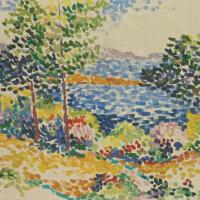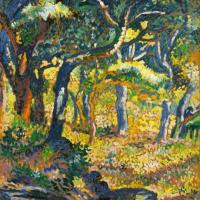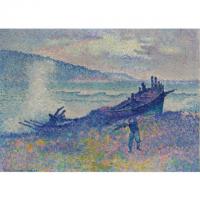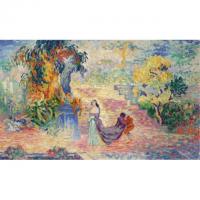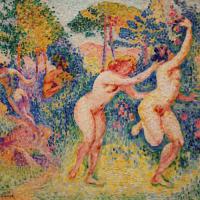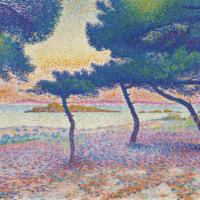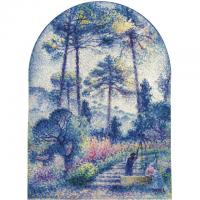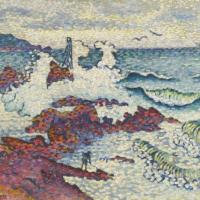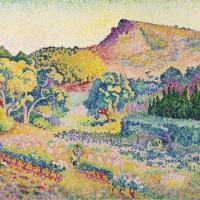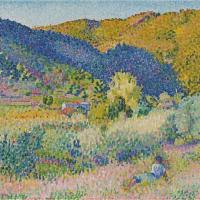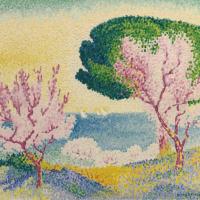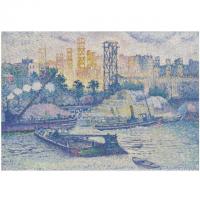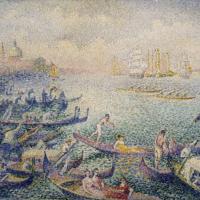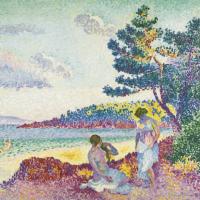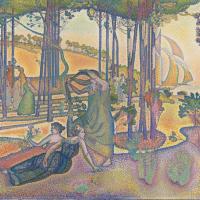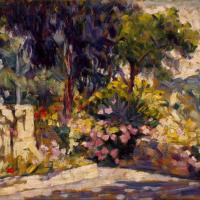Henri Edmond Cross
Barques Sur La Plage
$450.00
Bateaux Chou S Au Lavandou
$450.00
Bord De Mer En M Diterran e
$450.00
Clearing In Provence
$450.00
L Pave
$450.00
La Dame Au Parc
$450.00
La Fuite Des Nymphes
$450.00
La Plage De Saint
$450.00
Le Jardin En Provence
$450.00
Les Cypr S Cagnes
$450.00
M Diterran E Par Vent D Est
$450.00
Paysage Avec Le Cap N Gre
$450.00
Paysage Proven Al
$450.00
Printemps Rose
$450.00
Quai De Passy
$450.00
Regatta In Venice
$450.00
Sunset On The Lagoon
$450.00
The Bathers; Baigneuses
$480.00
The Evening Air
$450.00
The Flowered Terrace
$450.00
Two Trees
$450.00
Henri Edmond Cross
Henri Edmond (1856-1910)
Henri-Edmond Cross, born Henri-Edmond-Joseph Delacroix, (20 May 1856 – 16 May 1910) was a French painter and printmaker. He is most acclaimed as a master of Neo-Impressionism and he played an important role in shaping the second phase of that movement. He was a significant influence on Henri Matisse and many other artists. His work was instrumental in the development of Fauvism.
Henri-Edmond-Joseph Delacroix was born in Douai, a commune in the Norddépartment in northern France, on 20 May 1856. He had no surviving siblings. His parents, with a family history of ironmongery, were Alcide Delacroix, a French adventurer, and British Fanny Woollett.
In 1865 the family moved to a location near Lille, a northern French city close to the Belgian border. Alcide's cousin, Dr. Auguste Soins, recognized Henri's artistic talent and was very supportive of his artistic inclinations, even financing the boy's first drawing instructions under painter Carolus-Duran the following year. Henri was Duran's protégé for a year. His studies continued for a short time in Paris in 1875 with François Bonvin before returning to Lille. He studied at the École des Beaux-Arts, and in 1878 he enrolled at the Écoles Académiques de Dessin et d'Architecture, studying for three years in the studio of Alphonse Colas. His art education continued, under fellow Douai artist Émile Dupont-Zipcy, after moving to Paris in 1881.
Cross's early works, portraits and still lifes, were in the dark colors of Realism. In order to distinguish himself from the famous Romantic painter Eugène Delacroix, he changed his name in 1881, shortening and Anglicizing his birth name to "Henri Cross" – the French word croix means cross. 1881 was also the year of his first exhibition at the Salon des Artistes Français. He painted many landscapes on an 1883 trip to the Alpes-Maritimes, accompanied by his family. Dr. Soins, who was also along on the trip, was the subject of a painting that Cross exhibited at Nice's Exposition Universelle later in the year. During the Mediterranean trip, Cross met Paul Signac, who became a close friend and artistic influence.
In 1884 Cross co-founded the Société des Artistes Indépendants, which consisted of artists displeased with the practices of the official Salon, and presented unjuried exhibitions without prizes. There, he met and became friends with many artists involved in the Neo-Impressionist movement, including Georges Seurat, Albert Dubois-Pillet, and Charles Angrand.
In 1891 Cross began painting in the Neo-Impressionist style, and exhibited his first large piece using this technique in an Indépendants show. That painting was a divisionist portrait of Madame Hector France, née Irma Clare, whom Cross had met in 1888 and would marry in 1893. Robert Rosenblum wrote that "the picture is softly charged with a granular, atmospheric glow".
Cross's paintings of the early- to mid-1890s are characteristically Pointillist, with closely and regularly positioned tiny dots of color. Beginning around 1895, he gradually shifted his technique, instead using broad, blocky brushstrokes and leaving small areas of exposed bare canvas between the strokes. The resulting surfaces resembled mosaics, and the paintings may be seen as precursors to Fauvism and Cubism. In the Pointillist style, minute spots of paint were used to blend colors harmoniously; in contrast, the strategy in "second generation Neo-Impressionism" was to keep the colors separate, resulting in "vibrant shimmering visual effects through contrast". Cross stated that the Neo-Impressionists were "far more interested in creating harmonies of pure color, than in harmonizing the colors of a particular landscape or natural scene". Matisse and other artists were very influenced by the late-career Cross, and such works were instrumental in forming the principles of Fauvism. Among the other artists influenced by Cross were André Derain, Henri Manguin, Charles Camoin, Albert Marquet, Jean Puy, and Louis Valtat.
In 1905 Galerie Druet in Paris mounted Cross's first solo exhibition, which featured thirty paintings and thirty watercolors. The show was very successful, receiving critical acclaim, and most of the works were sold.
In the early 1880s Cross began to experience trouble with his eyes, which grew more severe in the 1900s. He also increasingly suffered from arthritis. At least in part due to these health issues that plagued him for years, Cross's body of work is relatively small. However, in his last years he was productive and very creative, and his work was featured in significant solo exhibitions; he received great acclaim from critics and enjoyed commercial success.
In 1909 Cross was treated in a Paris hospital for cancer. In January 1910 he returned to Saint-Clair, where he died of the cancer just four days short of his 54th birthday, on 16 May 1910. His tomb, in the Le Lavandou cemetery, features a bronze medallion that his friend Théo van Rysselberghe had designed. In July 1911, the city of Cross's birth, Douai, mounted a retrospective exhibition of his work.




